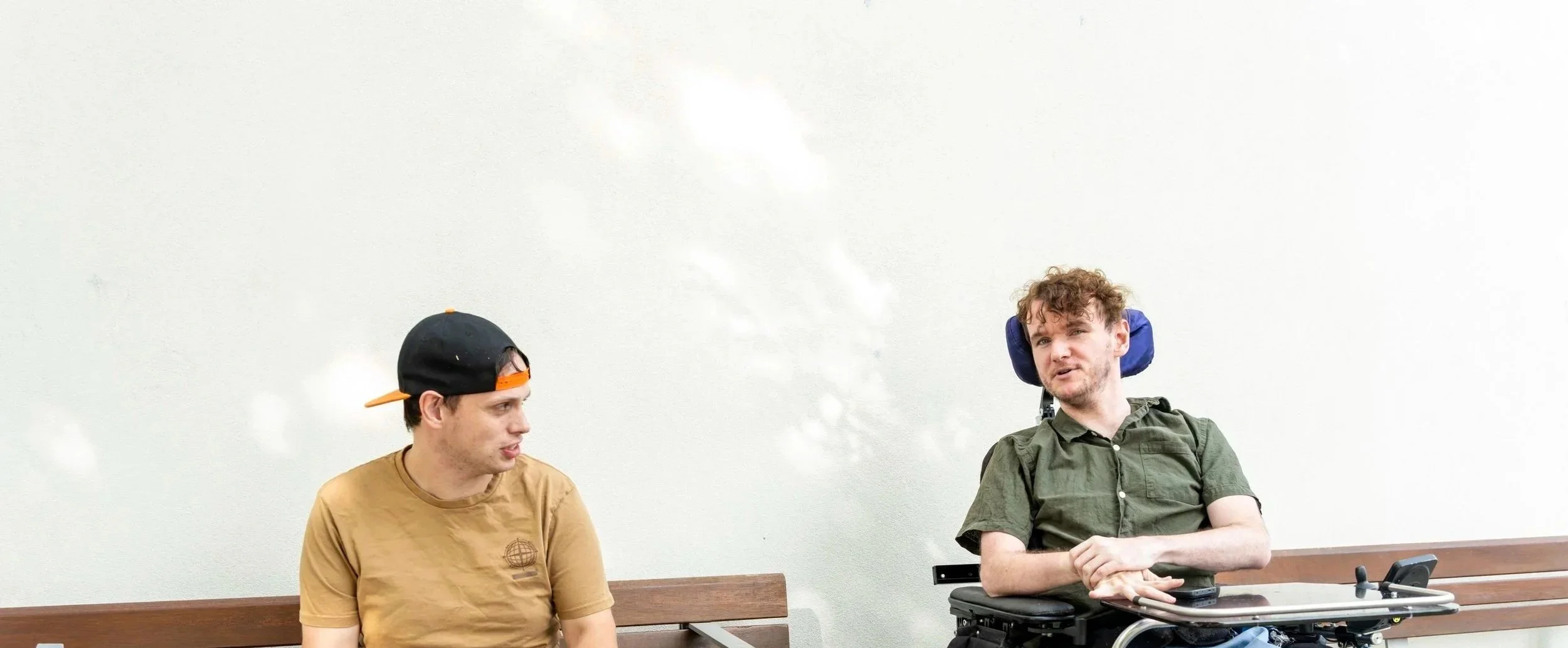
Managing pain and fatigue
In this section adults with cerebral palsy share experiences of pain and fatigue, along with information and strategies they’ve found helpful for approaching and managing these common concerns.

Managing fatigue
How you could use the ‘5 D’s to manage fatigue?
Here we share stories from young adults with cerebral palsy about how they were able to use this concept to think about fatigue and use the strategies within the 5 D’s to manage fatigue.
But first, a quick refresh of the concept:
Do the task - Because you want to, can’t do the other Ds or you have to be the one to do it.
Do the task but with some adaptation, for example assistive equipment.
Delegate the task - Ask someone else to do it.
Defer to task - do it later.
Drop the task - If you don’t want to, or can’t do it.
Sahra’ story - getting into wheelchair basketball
Sahra is really excited to start wheelchair basketball. She wants to push herself really hard at the training sessions twice a week but knows that will tire herself out physically and mentally afterwards.
Using the 5 D’s might help Sahra to manage her fatigue during the week.
“Push hard at training - it’s important to me to do this, I just need to manage my other activities around it.”
“Usually I walk with crutches to training but it’s a long way. Using my wheelchair to get there would save some energy.”
“I spend a lot of energy setting up my equipment and getting changed. I could hire a support worker for the sessions to help with that so that I can focus my energy on the training.”
“I might defer some of my other activities for the first few weeks while I get used to the training program.”
“I won’t drop the training, it’s my priority…for now. I could drop other tasks on training days. For example, if I prepare a freezer meal earlier in the week I won’t have to cook dinner on training days when I’m really tired.”
Zach’ story - fatigue in the gym
Zach has been going to the gym for a few months doing the same program. He enjoys the sessions but he feels wiped out for days afterwards and doesn’t have much energy for his usual activities.
Using the 5 D’s might help Zach to manage his fatigue during the week.
“I could adapt my program to do less. I would like my physio to provide advice on reducing the number of exercises, or changing the weights, reps or sets.”
“I could just keep doing the gym the same. But it’s been months now and the exhaustion hasn’t improved. I want something to change.”
“I would like my physio to talk to the personal trainer about changing the program and take charge of checking in with me in a few weeks time.”
“I am already deferring some of my other activities as I don’t have the energy. I would like to defer less.”
“I don’t want to drop the gym program just yet. I would like to try adapting the program and delegating some of the monitoring first.”
Lewis’ story - getting the dishes done
Lewis has dishes that need to be done.
Although they can stand to do the dishes, they get tired and sometimes don’t have energy later in the day.
Using the 5 D’s to think about managing this task could help to make sure this important task gets done but they also have enough energy to do other important things in the day.
“I can stand at the sink and wash all the dishes but this may not leave enough energy for other important things.”
“Adapt how I wash the dishes by washing them while sitting down or using a dishwasher. This might help conserve energy.”
“I could get a support worker to wash my dishes, especially on busy days. While I can wash the dishes it’s often better for me to save my energy for other important tasks.”
“I could do some dishes now and some later. I have to be careful with deferring this task as I don’t want the dishes to pile up!”
“I can’t really drop this task - the dishes need to get done one way or another!”
Reflection point
Think about a task or a day when you typically experience fatigue.
How could you use the 5 D’s to manage the tasks in the day and help with your fatigue?

Managing pain
How you could use ‘Describe - Impact - Outcome’ in practice?
Here we share stories from young adults with cerebral palsy about how they were able to use this concept to talk about pain and help plan their pain management strategies.
But first, a quick refresh of the concept:
What pain are you experiencing?
What impact does the pain have on you?
What is your desired outcome?
Azwar’s story
“For a few days after the gym my leg muscles feel really tight and sore and it’s quite painful when I use them.”
“I can still walk OK and do all the activities I need to but I can’t do gym again for a few days. This is mostly acceptable to me but I would prefer not to be quite so sore!”
I want to know if I can reduce my leg exercises a bit in the gym and still make strength gains. I want to know how long the muscle soreness should last. I want someone with knowledge of CP to review my program and discuss this with. I want reassurance about whether or not I am damaging my muscles if I am this sore.
Harper’s story
“When I go do a hydro session with my support worker I start getting strong cramps in my legs about halfway through my program, usually this is when I am trying to do some weight shifts at the side of the pool.”
“I feel like I can’t concentrate on what my support worker is saying to me or keep my balance properly. I get frustrated and like I can’t focus on the session anymore even though I want to.”
“I want to talk to my physio about adapting my program so that I have more breaks or change the exercises that cause my cramping.”
Leo’s Story
“I recently started playing wheelchair basketball and I love it! After a while of playing I start getting pain in my wrists.”
“When the pain starts I can't concentrate on the game as much. It means I'm not playing as well as I'd like to and I am not having as much fun as I want to have.”
“I want to speak to my physio and OT about looking at different options such as gloves, positioning, or a different way of pushing that might help with my wrists. I'd also like to speak with other wheelchair basketball players, I'm interested to know if they've had wrist pain, and how they've managed it.”
Reflection point
Think about a time when you experienced pain.
How would you describe the pain, the impact it was having, and the outcome you would have liked?
















